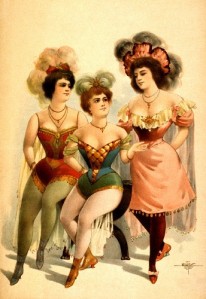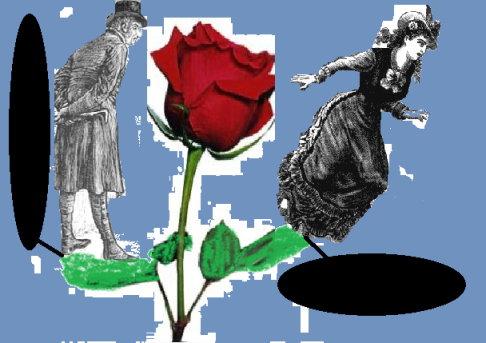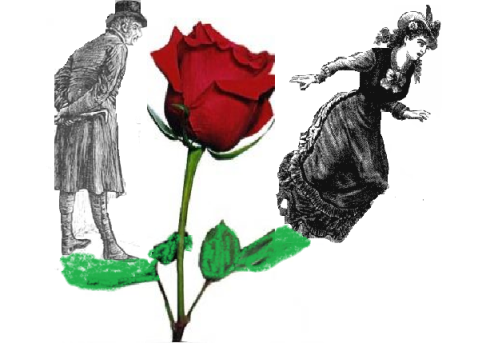Like several of our fellow pupils, The Ruineers group did eventually stray from the norm—yet we believe it was thoroughly developed and just flat-out interesting; this isn’t to say we didn’t have our flaws. One seemingly pervasive issue for the group as a whole was that at times we struggled to get everyone to meet because our schedules were usually conflicting with one another.
Yet what may have proved to be a stumbling block for us—and many others I’m sure—became our most valued asset as well; by not getting a chance to group up, discuss class topics, and creating one main thesis, we each spent some time ruminating over the issue at hand. It is because of this forced isolation that our final product became that much more eclectic and truly intriguing. While most groups probably decided on one idea right away—so as to remain coherent in their over-arching theme—our group melded together several ideas manufactured out of our free-time and untainted by psychological diseases like “groupthink.”
Perhaps that then, is what defines us as more than just some random selection of students with differing ideals; given time, each of us came to a unique, but surprisingly similar conclusion regarding ruin that manifested itself as creatively massive edifice when compared with other groups. This is not to say other students didn’t put forth the same amount of effort as us. However, everything boiled down to the core, our central feelings, thoughts, and desires shone brighter than anything else simply because we took the time to be honest with not just ourselves, but with each other; we learned to appreciate one another for the facets that make us valuable in a group, and while at times we struggled to sift through the information and come up with a feasible thesis, we always managed to float back to cooperative spirit—and that alone became the catalyst for our success.
Take for example Jessica Wells’ blog “The Lily of The Valley” [Link: https://ruineers.wordpress.com/2012/10/16/the-lily-of-the-valley/]. What starts as a gentle, almost facetious inspection of the irony found in Dante Rossetti’s poem Jenny quickly becomes an overwhelmingly serious discussion when it is declared that Jenny’s purity is corrupt and slowly eroding.
Another fascinating and startlingly intuitive post is by Laurel Gordon in her blog “New Ruin in Esther Kahn” [Link: https://ruineers.wordpress.com/2012/10/24/new-ruin-in-esther-kahn/]. The parallels drawn between similarly fictitious characters is especially salient because it outlines the idea that while ruin may not be overtly present, it is bound to rise beneath the veil of an overly active woman like Esther Kahn.
A third persuasive—and surprisingly accurate text—provided by Cameron reflects on the importance of Art Nouveau at the time in which it came about. [Link: https://ruineers.wordpress.com/2012/10/29/art-nouveau-what-is-it-why-is-it-important/] The ideas of this piece prove most insightful as they reflect on the significance of this particular art movement as not just another form or design of expression, but as a mark of time and society; Art Nouveau wasn’t just art, it was humanity. It was society, and it was a representation of the massive change within society.
Lastly, “Cubism: An Interpretation” [Link: https://ruineers.wordpress.com/2012/11/01/cubism-an-interpretation/]. While the seeming randomness of the picture itself is enjoyable, it is the idea hidden between the jagged and unscrupulous lines of “Cubism” that is most enjoyable because in a way, like anything dauntingly ambiguous, it leaves a feeling of anxiety at not being able to be identified. This thick greyness of definition is a perfect explanation of the origin and composition of ruin: a person can never truly pinpoint when ruin will strike, and even when it does, its devastating demeanor may mean several different things to several different individuals—thus the mirroring of reality that ambiguity and greyness directly resemble ruin in its fullest form!
All in all, our blogs not only represent the entrails of ruin wide-open and dissected thoroughly, but they also, through the “Cubism” artwork, demonstrate the wide range of emotion associated with ruin. This ability to encompass more than just words when defining ruin is the group’s greatest facet. And even then, our words alone flash with such an innovative and enamoring effulgence that it seems hard to believe that impact our work will dwindle in the years to come—one day we may look back and smile with pride knowing how well-developed our ideas on ruin were.





